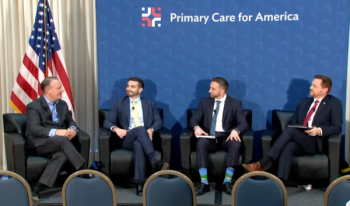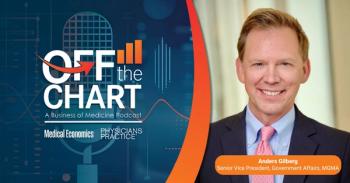
Inflation, labor, health insurance expected to drive up costs in health care
KFF panel talks about economic effects as consumer prices soar.
It’s clear consumer prices are rising around the nation, but it is less clear how inflation will affect costs of business within the health care industry.
Meanwhile, labor costs are spiking and health insurance costs could be heading for a 2023 increase due to
The federal
It appears health care prices tend to rise faster than the rest of the economy. That happens because typically, in a downturn or recession, health care prices maintain or increase slightly, Rhyan said.
Now, it appears health care price growth is lagging behind in a rapid period of economy-wide inflation, largely due to Medicare, Medicaid, and private insurers negotiating prices prospectively, so rates are set in advance, Rhyan said.
Contracts may be set for three to five years, said Suzie Desai, MBA, senior director and sector lead of the U.S. not-for-profit healthcare group in S&P Global Ratings. Hospital pricing is complicated, but some are reporting salary and wage cost increases of 8% to 10%, and if health systems are building, construction costs are going up, she said.
Strategic initiatives to improve costs, or mergers and acquisitions, are not completely on the back burner, but getting labor costs under control has been the recent priority, Desai said. Rhyan agreed, noting health care labor costs are rising even faster than general labor costs across the economy, and that could continue due to increased demand over time as the population ages.
Hospitals had a tough first quarter of 2022, with the second quarter “for some, a little better, but still very challenging,” Desai said. While a few have made profits and many maintain overall cash flow, but many have posted margins ranging from break-even to negative 13%, she said.
Meanwhile, health insurance costs could rise 10% going into 2023, largely due to rising prices and rising utilization. Those are much higher than in recent years when premiums were relatively flat, said Cynthia Cox, MPH, KFF vice president and director for the program on the Affordable Care Act.
Insurance companies have been filing rate reports with state regulators to preview prices for individual health insurance plans for the coming year, Cox said. That is a relatively small group of insureds compared to the number of people with health insurance through their employers, but is probably indicative of what insurers are experiencing in the employer market, she said.
It was unclear whether exactly how rising health insurance prices would factor into costs of doing business for physicians, hospitals and health systems. The analysts noted employers consider health insurance part of
Newsletter
Stay informed and empowered with Medical Economics enewsletter, delivering expert insights, financial strategies, practice management tips and technology trends — tailored for today’s physicians.


















